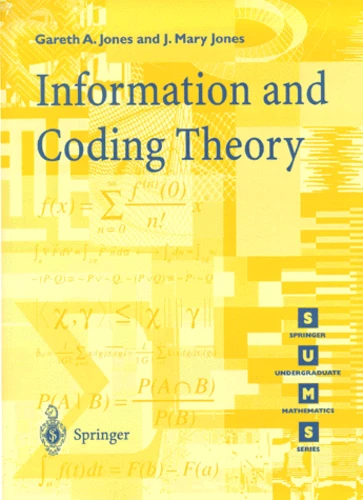Information and Coding Theory
Par : ,Formats :
- Paiement en ligne :
- Livraison à domicile ou en point Mondial Relay indisponible
- Retrait Click and Collect en magasin gratuit
- Réservation en ligne avec paiement en magasin :
- Indisponible pour réserver et payer en magasin
- Nombre de pages210
- PrésentationBroché
- Poids0.39 kg
- Dimensions17,0 cm × 23,5 cm × 1,4 cm
- ISBN1-85233-622-6
- EAN9781852336226
- Date de parution06/09/2000
- CollectionUndergraduate Mathematics
- ÉditeurSpringer
Résumé
Information theory and coding theory are two related aspects of the same problem: how to transmit information efficiently and accurately. This book provides a clear introduction to both subjects, emphasising the relationship and links between the two. The first part, concentrating on information theory, covers uniquely decodable and instantaneous codes, Huffman coding, entropy, information channels and Shannon's Fundamental Theorem. The second part, on coding theory, uses linear algebra to construct examples of error-correcting codes, such as the Hamming, Hadamard, Golay and Reed-Muller codes. The authors highlight carefully explained proofs and worked examples throughout and exercises with solutions are provided to consolidate understanding of the main concepts and techniques. Assuming only some basic probability theory and linear algebra, together with a little calculus, this book is aimed at second and third year undergraduate students in mathematics, electronics and computer science.
Information theory and coding theory are two related aspects of the same problem: how to transmit information efficiently and accurately. This book provides a clear introduction to both subjects, emphasising the relationship and links between the two. The first part, concentrating on information theory, covers uniquely decodable and instantaneous codes, Huffman coding, entropy, information channels and Shannon's Fundamental Theorem. The second part, on coding theory, uses linear algebra to construct examples of error-correcting codes, such as the Hamming, Hadamard, Golay and Reed-Muller codes. The authors highlight carefully explained proofs and worked examples throughout and exercises with solutions are provided to consolidate understanding of the main concepts and techniques. Assuming only some basic probability theory and linear algebra, together with a little calculus, this book is aimed at second and third year undergraduate students in mathematics, electronics and computer science.

